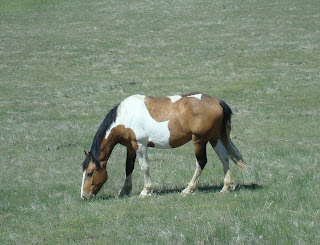I love these things where one never really knows what happened like the Alamo, Little Big Horn, the 17 minute gap in the Watergate tape. I prefer to just go with the myth or legend. But archeologists have done a lot of work in identifying what troops were in what location and how the battle evolved. For example, they can tell from shell casings they found whether they were Indian of soldier shells, whether the soldiers were in an organized line or chaotic retreat and they can associate casings with a particular rifle to know where a soldier travelled on the battle field. It is really fascinating what they are discovering. A good book that includes a lot of the forensic analysis of the battle is "Son of the Morning Star" by Evan S. Connell. A bit dry but fascinating.
I've always wanted to visit this place and try to relive the battle. We bought an auto-tour cd at the visitor center which was really worth it. The park is laid out pretty well with a loop that brings you to where Reno made the initial attack to where Reno and Benteen tried to find Custer and finally to "Custer Hill" where 200+ members of the 7th Cavalry met their demise. It is pretty desolate but there are many hills and "coulees", which I think are like drainage gulches, that led to the Little Big Horn river. You can see that a lot of the action would have been hidden from view because of the rolling terrain.
Here are a few photos of key areas in the area.
This is the view of the Little Big Horn river from a knoll on the battlefield. The Indian camp would have been just beyond the trees. Custer had sent General Reno to attack the Indian encampment. Reno's men were repulsed and this is the view that he would have had as the Indians attacked and attacked his retreating troops. Those are the Big Horn mountains way off in the distance.


Also, the place was very quiet, partly because there weren't many people there. The only sound we could hear came from a variety of song birds. There were no trees to be found but the birds were hidden in the long grass so we couldn't see where the sounds came from.
I really enjoyed this stop on our return home.
For more information on the Little Big Horn Battlefied, click here

Glad you enjoyed your long awaited visit to LBH, Tony. I've lost count on how many visits I've had since 1981, but I have reasons for those visits. I lead a non-profit cooperating association of the NPS at LBH, Friends of the Little Bighorn Battlefield. If you have time, please visit our site FriendsLittleBighorn.com.
ReplyDeleteRegards,
Bob